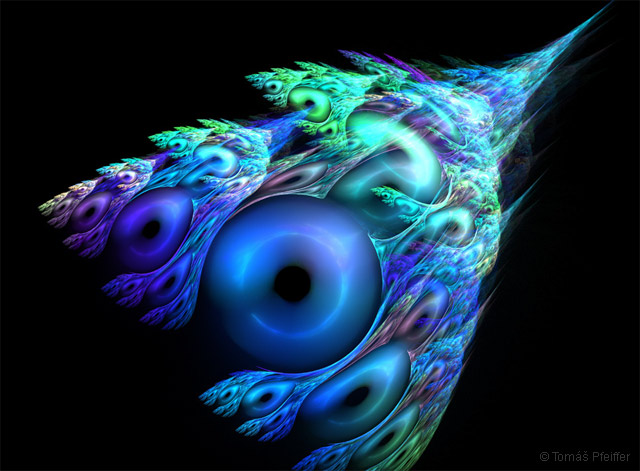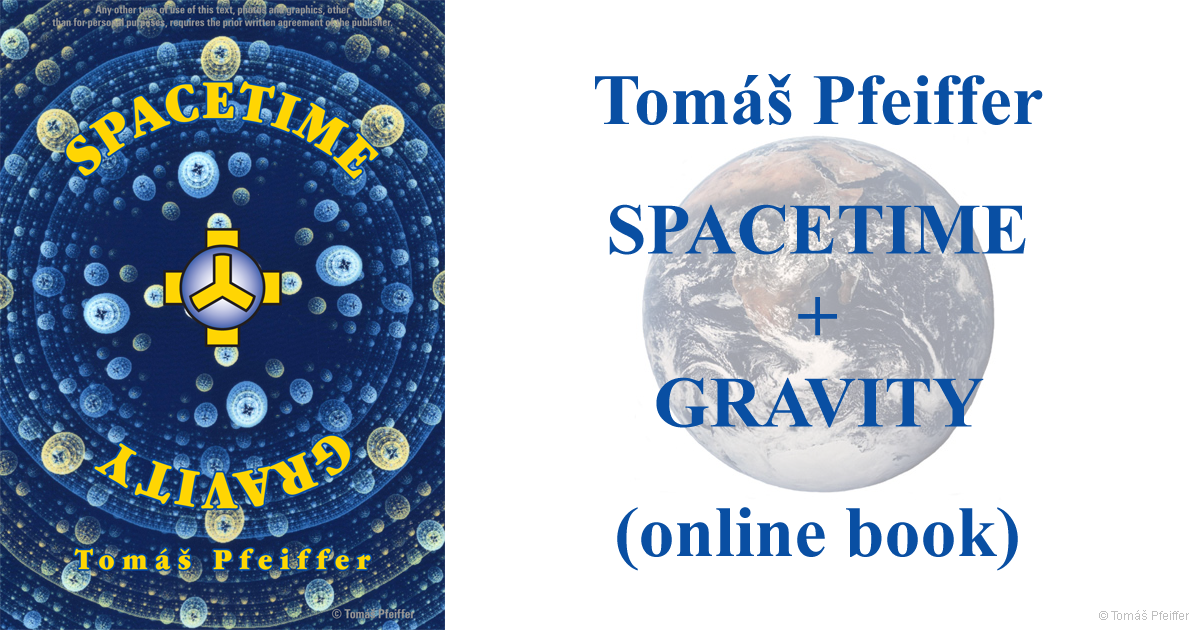SINGULARITY
We are thus enclosed by the horizon of cognition in a sort of spacetime bubble. Anything that exists is dual; hence, on the contrary, the singularity phenomenon – crossing the spacetime boundary – paradoxically originates at interval sizes that are generally unreachable by us (e.g. intervals of energy, time, gravity, etc.). An example is the black and white hole formation which interconnects two neighbouring universes. If we incorporate the Z axis into our simplified two-dimensional example (Fig. 2, Fig. 4), after simplifying it we will obtain a spherical image of singularity:

The door to the side universe, or universes constantly communicate within their separation. They permeate one another like Ezekiel’s wheels within wheels. Our matter, as we know it, is a subuniverse and the universe over our heads is a suprauniverse. Relativity applies not only to the dimensional but also time context. There are an infinite number of universes interconnected like this.
During a hypothetical flight through this formation, each plane of a “traveller” has different time. An outside observer will only see the “line”; it is the traveller who becomes seemingly elongated in that line as the observed gets closer to the “horizon of cognition”.
However, this perception will be a fiction from the traveller’s perspective, which means that passing through their own singularity makes their perception different. The mathematics of large intervals very much varies from our linear mathematics. For instance, the lifetime of a particle measured in a particle accelerator, e.g. 10-5 sec., de facto represents millions-of-years intervals within the particle’s spacetime, since the law of relativity (law of the horizon of cognition) applies to everything; the result of measurement is therefore not real but a fiction of a linear depiction that is often primarily used by contemporary physics - at its peril. The same relations are also true in determining the particle energy and mass.

Figure 7 – Fractal
This applies generally to all such large intervals, no matter the kind; here, too, the duality is manifested. In proximity to the horizon of cognition any increase in energy does not bring an increase in cognition. Contemporary physics keeps constructing still greater accelerators with only a minor increase in understanding the laws of matter. For example, despite the immense effort that went into the discovery of Higgs boson, there are an infinite series of further subparticles waiting… And so the act of measuring paradoxically became its own enemy. Future journey requires a change in thinking – a paradigm shift.

Figure 8 – The zone of uncertainty in the Horizon of cognition’s proximity.
In the case of extremely large intervals in relation to an observer, i.e. in the proximity of the horizon of cognition, the reading of quantity changes from the “side view to the horizontal view”, due to the increasing “alpha” angle relative to the hypothetical Euclidean network. As such, it is impossible to perceive the exact position of this point; giving rise to a seeming uncertainty. From the observer’s perspective, points of the curved spacetime are thus positioned one after another. That creates the uncertainty of space and time for the observer. At a certain phase, we observe only a single point – a limit that is seemingly finite – for example the speed of light etc.
This holds true for any given quantity, even time and space. Thus, in the slit effect in physics, a particle seemingly passes through two slits at the same time, or we observe seemingly more particles on the impact surface, even though there is only one. The reason is the uncertainty in the horizon of cognition’s proximity, where one particle is observed in various intervals of time and space, as also proved by the curve which results from summating in interference.
Thus, the slit- and similar effects are probably the direct proof the existence of the horizon of cognition.
The same applies to any similar area, for example atom’s electron orbitals that are very different from real quasi-circular orbits. Here the horizon of cognition also affects the observer’s perception. Like every law of nature, the horizon of cognition must be self-applicable, too, which results in the shape of Möbius strip, hence the finitely infinite curve.

Figure 9 – Planet Earth (NASA)
We should start by recognizing that we measure each interval from the position of an observer, however, their position can be anywhere. Therefore, the horizon of cognition is always connected with the observer – it is them who determine the location of the horizon of cognition. For another observer the horizon of cognition might be the place where we are standing at the moment. Or there is a quotation which entirely holds true: “Give me a place to stand, and I will move the earth.”

